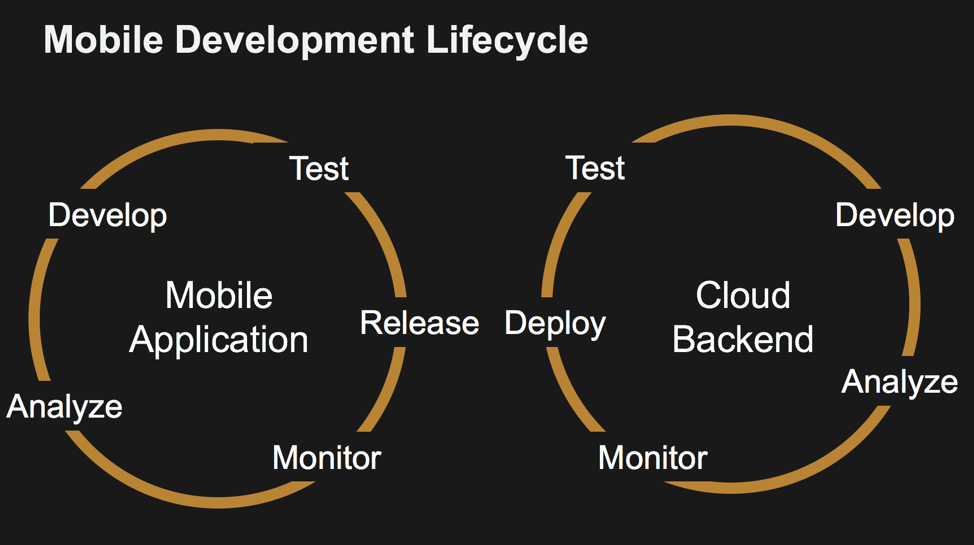Mobile Development
Mobile application development is the process to making software for smartphones and digital assistants, most commonly for Android and iOS. The software can be preinstalled on the device, downloaded from a mobile app store or accessed through a mobile web browser. The programming and markup languages used for this kind of software development include Java, Swift, C# and HTML5.
Mobile app development is rapidly growing. From retail, telecommunications and e-commerce to insurance, healthcare and government, organizations across industries must meet user expectations for real-time, convenient ways to conduct transactions and access information. Today, mobile devices—and the mobile applications that unlock their value—are the most popular way for people and businesses to connect to the internet. To stay relevant, responsive and successful, organizations need to develop the mobile applications that their customers, partners and employees demand.
Yet mobile application development might seem daunting. Once you’ve selected the OS platform or platforms, you need to overcome the limitations of mobile devices and usher your app all the way past the potential hurdles of distribution. Fortunately, by following a few basic guidelines and best practices, you can streamline your application development journey.
Alternatives for Building Mobile Apps
There are four major development approaches when building mobile applications
Native Mobile Applications
Cross-Platform Native Mobile Applications
Hybrid Mobile Applications
Progressive Web Applications
Each of these approaches for developing mobile applications has its own set of advantages and disadvantages. When choosing the right development approach for their projects, developers consider the desired user experience, the computing resources and native features required by the app, the development budget, time targets, and resources available to maintain the app.
Native Applications: Native mobile applications are written in the programming language and frameworks provided by the platform owner and running directly on the operating system of the device such as iOS and Android.
Cross-Platform Applications: Cross-platform native mobile applications can be written in variety of different programming languages and frameworks, but they are compiled into a native application running directly on the operating system of the device.
Hybrid-Web Applications: Hybrid mobile applications are built with standard web technologies - such as JavaScript, CSS, and HTML5 - and they are bundled as app installation packages. Contrary to the native apps, hybrid apps work on a 'web container' which provides a browser runtime and a bridge for native device APIs via Apache Cordova.
Progressive Web Applications: PWAs offer an alternative approach to traditional mobile app development by skipping app store delivery and app installations. PWAs are web applications that utilize a set of browser capabilities - such as working offline, running a background process, and adding a link to the device home screen - to provide an 'app like' user experience.
The Mobile Application Development Lifecycle
There are two interlinked core components of a mobile application: 1) the mobile application “Front-End” that resides on the mobile device, and 2) the services “Back-End” that supports the mobile front-end.

Front-end vs. Back-end
In the early days of the modern smartphone applications era, mobile applications went through a similar evolution as first websites. At first, the applications and sites where wholly contained within themselves and acted as little more than static advertisements for the brand, company, product, or service.
However, as connectivity and network capabilities improved, the applications became increasingly connected to sources of data and information that lived outside of the app itself, and the apps became increasingly dynamic as they were able to update their UI and content with data received over the network from queries to data sources.
As a result, the mobile front-end applications increasingly rely on and integrated with back-end services which provide data to be consumed through the mobile front-end. Such data can include, for example, product information for e-commerce apps or flight info for travel and reservation apps. For a mobile game, the data may include new levels or challenges and scores or avatars from other players.
How Front-end 'Talks' to the Back-end?
The mobile front-end obtains the data from the back-end via a variety of service calls such as APIs. In some cases, these APIs may be owned and operated by the same entity developing the mobile application. In other cases, the API may be controlled by a third party and access is granted to the mobile application via a commercial arrangement.
For example, a developer may obtain social media or advertising content by making calls to media or advertising company services. In this case, a developer may have to sign a contract in order to obtain credentials and a key that grants access to the API and governs how that developer can use it, how much it will cost, or how frequently it may be called, or how much data can be requested over what time period.
Why Developers Use a Cloud-backend?
For most of the applications, mobile developers are responsible for creating and managing the back-end services for their application. The mobile developer may not be an expert or even particularly skilled in spinning up and running a back-end infrastructure.
In such a case, developers may prefer to take advantage of a cloud services provider -- a backend-as-a-service provider -- that handles all of the drudge work and heavy lifting of managing back-end capabilities, so the developers can focus purely on the features and functionality they are building in their app, without having to worry about scalability, security, and reliability.

